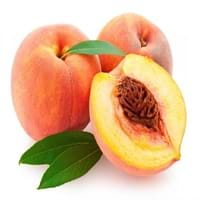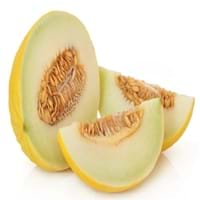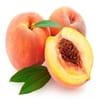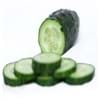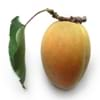Health Benefits
Cancer prevention, Heart care, Improves eye vision, Reduces stress, Regulation of heart rate
Body hydration, Cancer prevention, Gout treatment, Heart care, Treatment of skin Diseases
General Benefits
Anti oxidant properties, Eye care
Body hydration, Controls blood pressure, Digestive aid, Eye care, Helps in weight loss, Improves eye vision, Maintains healthy cholesterol level, Strengthens bones
Skin Benefits
Heals sunburn, Reduces wrinkles, Treatment of skin diseases
Anti-aging benefits, Brightens and lightens complexion, Hydrates skin, Reduces wrinkles, Treatment of dark spots
Hair Benefits
Prevents hair loss
Prevents hair loss, Promotes longer and healthier hair, Protects hair
Allergy Symptoms
Abdominal pains, Anaphylaxis, Breathing difficulty, Diarrhea, Dizziness, Hives, Itching, Lightheadedness, Nasal congestion, Nausea, Swelling of mouth, tongue or lips, Tingling sensation in mouth, Vomiting, Wheezing
Abdominal cramps, Breathing difficulty, Coughing, Diarrhea, Hives, Hoarseness, Itching in eyes, Itching of mouth, Itching sensation in throat, Nasal congestion, Nausea, Skin rash, Wheezing
Side Effects
Allergic reaction
Allergic reaction
Best Time to Eat
As a snack in the late afternoon, Eat the fresh ones, avoid mixing with any other foods, don't eat after meal., Morning time (before lunch)
As a snack in the late afternoon, Don't consume at night and before bed, Eat the fresh ones, avoid mixing with any other foods, don't eat after meal., Morning time (before lunch)
Vitamin B5 (Pantothenic Acid)
Vitamin C (Ascorbic Acid)
Vitamin K (Phyllochinone)
Phytosterol
Not Available
Calories in Fresh Fruit with Peel
Not Available
Calories in Fresh Fruit without Peel
Not Available
Calories in Canned Form
Not Available
Season
Autumn, Summer
All seasons
Varieties
Reliance, Sweet Scarlet, Spring Snow, Sugar May, Santa Rosa, Red Beauty, Glowhaven, Cresthaven and Redhaven Peaches
Green Flesh, Yellow Rind and Orange Flesh
Color
Pink, Red, White, Yellow, Yellowish-orange
Green, Yellow
Inside Color
Yellow
Light Green
Grows on
Trees
Not Available
Soil Type
Sandy loam, Well-drained
Sandy loam, Well-drained
Climatic Conditions
Cold, Warm
Warm
Facts about
- In china, peaches are considered as a symbol of good luck.
- From 1982, august is National peach month in USA.
- In roman times, Peaches were also called as Persian apples, as people assumed that they originated from Persia.
- The average weight of honeydew melon is 6 pounds.
- 90% of a honeydew is water.
- In middle east countries, dried and roasted honeydew seeds are consumed as snacks.
- Honeydew melons can be 15-22 mm long.
Other Countries
Greece, Italy, Spain, United States of America
Brazil, Egypt, India, Iran, Mexico, Morocco, Spain, Turkey, United States of America
Top Importer
Germany
Not Available
Top Exporter
Spain
Not Available
Botanical Name
Prunus persica
Cucumis melo
Synonym
Not Available
Not Available
Subkingdom
Tracheobionta
Tracheobionta
Division
Magnoliophyta
Magnoliophyta
Class
Magnoliopsida
Magnoliopsida
Subclass
Rosidae
Dillenhidae
Order
Rosales
Cucurbitales
Family
Rosaceae
Cucurbitaceae
Species
P. persica
C. melo
Difference Between Peach and Honeydew
We might think that Peach and Honeydew are similar with respect to nutritional value and health benefits. But the nutrient content of both fruits is different. Peach and Honeydew Facts such as their taste, shape, color, and size are also distinct. The difference between Peach and Honeydew is explained here.
The amount of calories in 100 gm of fresh Peach and Honeydew with peel is 39.00 kcal and Not Available and the amount of calories without peel is Not Available and 36.00 kcal respectively. Thus, Peach and Honeydew belong to Low Calorie Fruits and Low Calorie Fruits category.These fruits might or might not differ with respect to their scientific classification. The order of Peach and Honeydew is Rosales and Cucurbitales respectively. Peach belongs to Rosaceae family and Honeydew belongs to Cucurbitaceae family. Peach belongs to Prunus genus of P. persica species and Honeydew belongs to Cucumis genus of C. melo species. Beings plants, both fruits belong to Plantae Kingdom.
